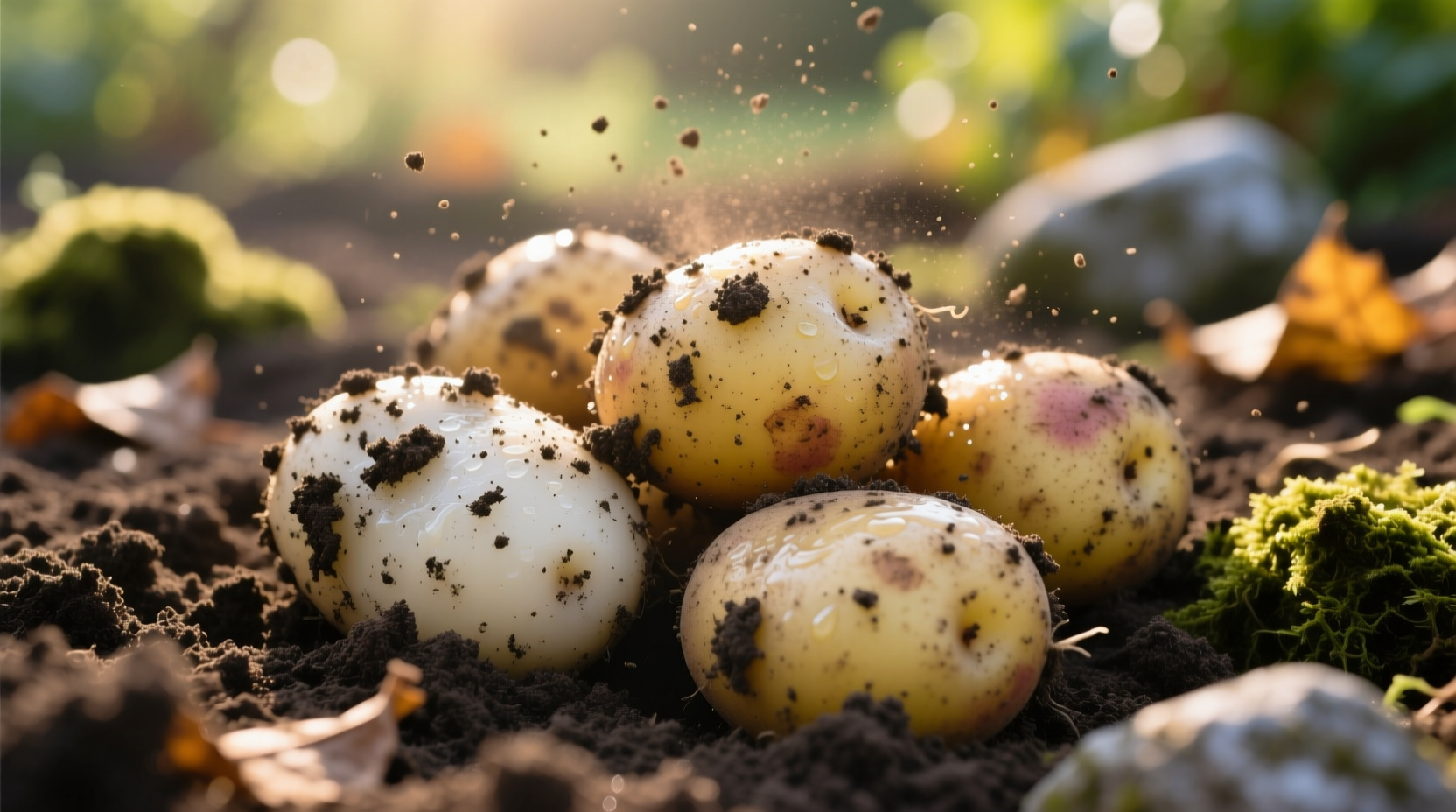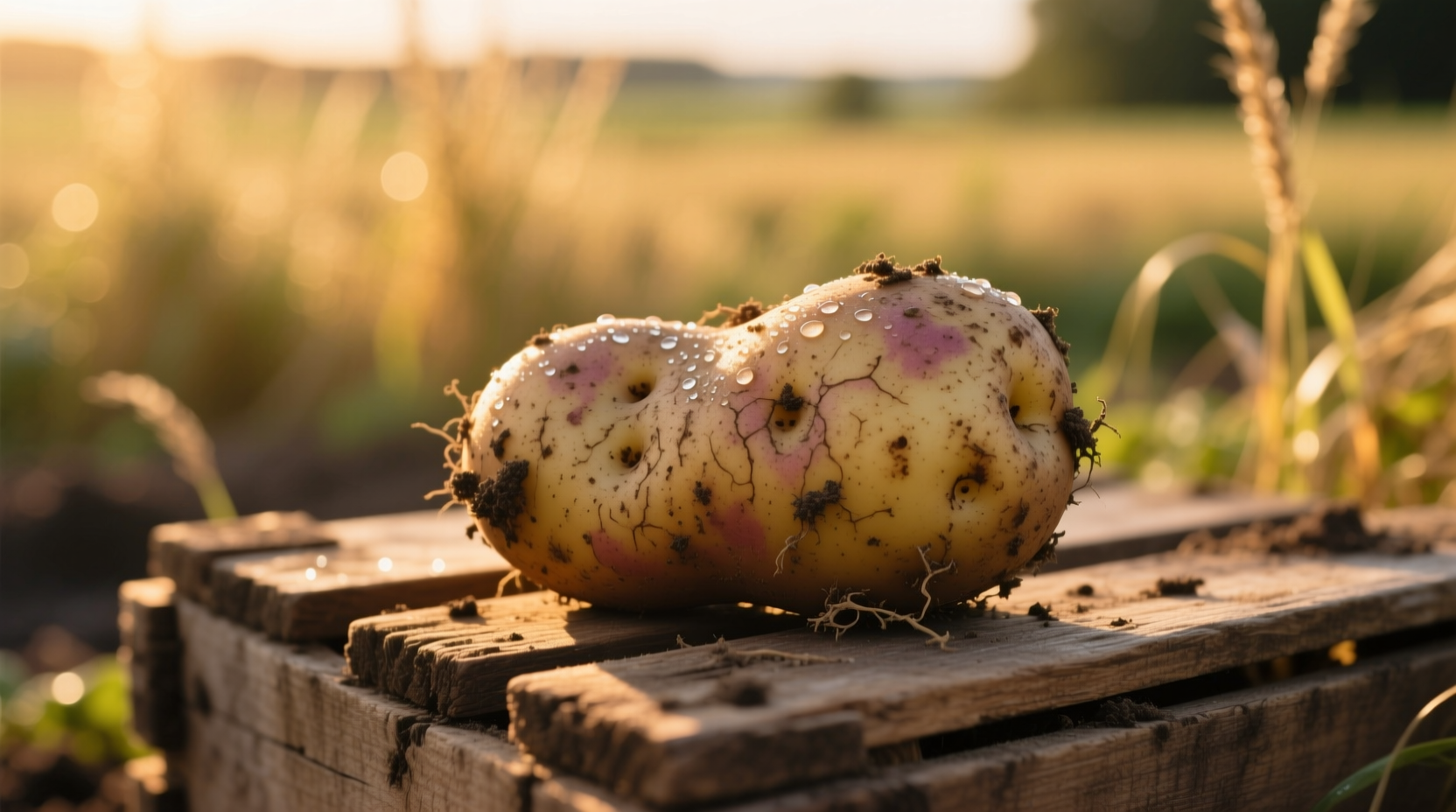Yes, potatoes are classified as vegetables in dietary guidelines despite being botanically tubers. They provide essential nutrients like potassium, vitamin C, and fiber, making them a valuable part of balanced diets when prepared healthily.
When you reach for that comforting baked potato or crisp french fry, you're grabbing one of history's most transformative foods. But confusion persists: is potato a vegetable in nutritional terms? The answer matters for your meal planning, dietary choices, and understanding this staple's role in healthy eating. Let's clarify this common misconception with science-backed facts you can trust.
Botanical Reality vs. Culinary Classification
Scientifically, potatoes (Solanum tuberosum) are modified underground stems called tubers, not true vegetables which typically refer to edible plant parts like leaves, stems, or roots. However, the USDA and major dietary guidelines worldwide—including the Dietary Guidelines for Americans—categorize potatoes as starchy vegetables alongside corn and peas. This practical classification reflects their nutritional profile and culinary use rather than strict botanical accuracy.
| Classification Type | Category | Examples |
|---|---|---|
| Botanical | Tuber (modified stem) | Potatoes, yams |
| Nutritional | Starchy vegetable | Potatoes, corn, peas |
| Culinary | Vegetable | All preparation forms except fried |
Nutritional Powerhouse: What Makes Potatoes Valuable
One medium potato (5.3 oz) with skin delivers remarkable nutrition according to USDA FoodData Central:
- 110 calories with zero fat
- 45% of daily vitamin C needs (more than tomatoes)
- 620mg potassium (more than bananas)
- 2g fiber when eaten with skin
- Significant B6, magnesium, and iron
The nutritional value of potatoes changes dramatically based on preparation. Baking, boiling, or roasting preserves nutrients, while frying adds unhealthy fats and calories. The skin contains nearly half the fiber and substantial nutrients, making peeling counterproductive for health.
Potato Evolution: From Andes to Global Staple
Understanding potatoes' journey explains their nutritional significance:
- 8000 BCE: First domesticated in modern-day Peru and Bolivia
- 1536: Spanish conquistadors bring potatoes to Europe
- 1719: Introduced to North America in Londonderry, New Hampshire
- 19th century: Become Europe's critical food security crop
- Today: Fourth most-consumed food crop globally after rice, wheat, and maize
This potato vegetable has adapted to diverse growing conditions worldwide, developing over 4,000 varieties with different nutritional profiles. The International Potato Center in Peru maintains the world's largest potato collection, preserving genetic diversity critical for future food security.
Health Benefits Backed by Research
Recent studies reveal compelling health benefits when potatoes are prepared properly:
- Blood pressure management: The potassium content helps counter sodium's effects (American Journal of Clinical Nutrition, 2020)
- Gut health support: Resistant starch in cooled potatoes feeds beneficial gut bacteria
- Blood sugar control: When eaten with skin and cooled, potatoes have lower glycemic impact
- Nutrient density: More vitamin C and potassium per serving than many common vegetables
Researchers at the Purdue University found that participants who included potatoes in a balanced diet showed no negative metabolic effects compared to those avoiding them. The key factor was preparation method—steamed or baked potatoes performed equally well as other vegetables in promoting health.
Practical Guidance: Maximizing Potato Benefits
To get the most from this versatile food, follow these evidence-based recommendations:
Smart Preparation Techniques
- Always keep the skin on—it contains valuable fiber and nutrients
- Cool cooked potatoes before eating to increase resistant starch by 50-70%
- Avoid deep frying—opt for baking, roasting, or boiling instead
- Pair with healthy fats like olive oil to enhance absorption of fat-soluble vitamins
Dietary Integration Strategies
- Substitute potatoes for refined grains like white rice or pasta
- Include in salads when cooled for added resistant starch
- Use as base for vegetable-loaded shepherd's pie
- Replace half the meat in dishes with diced potatoes for added nutrition
Common Misconceptions Clarified
Let's address frequent questions about are potatoes considered vegetables in dietary contexts:
"Potatoes are just empty carbs"
False. Potatoes provide complex carbohydrates along with significant vitamins, minerals, and fiber. They contain more potassium than bananas and more vitamin C than tomatoes by weight.
"All potato preparations are equally healthy"
Incorrect. A baked potato with skin offers substantial nutrition, while french fries dramatically increase fat and calorie content while reducing nutritional value. The preparation method determines health impact.
"Sweet potatoes are always healthier than white potatoes"
Not necessarily. While sweet potatoes contain more vitamin A, white potatoes provide more potassium and have a similar overall nutrient profile. Both can be healthy choices depending on preparation.
When Potatoes Fit Best in Your Diet
Understanding potato vegetable classification helps determine optimal usage:
Ideal Applications
- As replacement for refined grains in meals
- In salads when cooled for increased resistant starch
- As vehicle for other vegetables (stuffed potatoes)
- For athletes needing complex carbohydrates
Limitations to Consider
- Not ideal as sole vegetable source—rotate with non-starchy options
- Fried preparations significantly reduce health benefits
- People with diabetes should monitor portions and pair with protein/fat
- Green or sprouted potatoes contain solanine and should be avoided
These context boundaries help maximize the potato health benefits while minimizing potential drawbacks. The key is viewing potatoes as part of dietary variety rather than a standalone solution.
Practical Takeaways for Health-Conscious Eaters
Understanding the truth about potato vegetable classification empowers better food choices. Potatoes aren't nutritionally inferior to other vegetables when prepared properly—they're simply different. By keeping skins intact, choosing healthy cooking methods, and incorporating them as part of vegetable variety, you harness their substantial nutritional benefits. Remember that dietary guidelines consistently include potatoes among recommended vegetable servings, recognizing their valuable contribution to balanced eating patterns worldwide.












 浙公网安备
33010002000092号
浙公网安备
33010002000092号 浙B2-20120091-4
浙B2-20120091-4